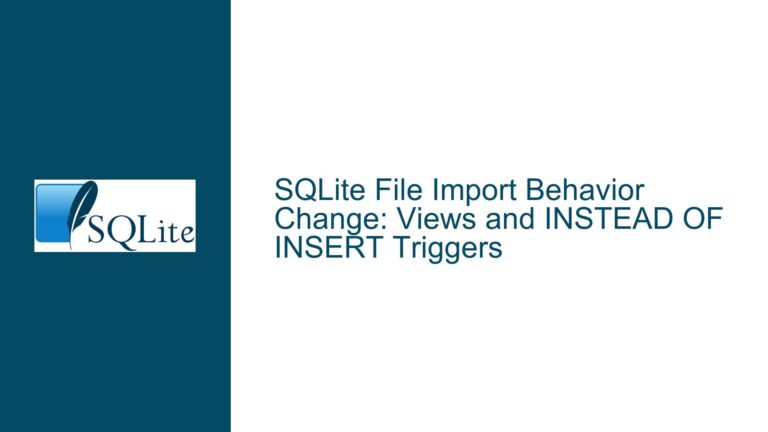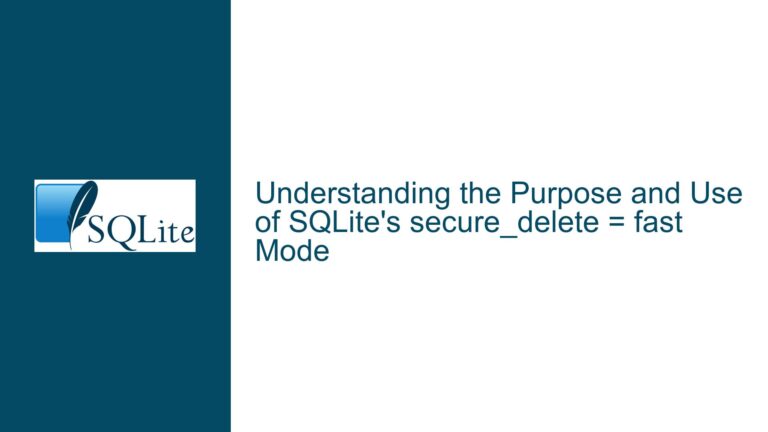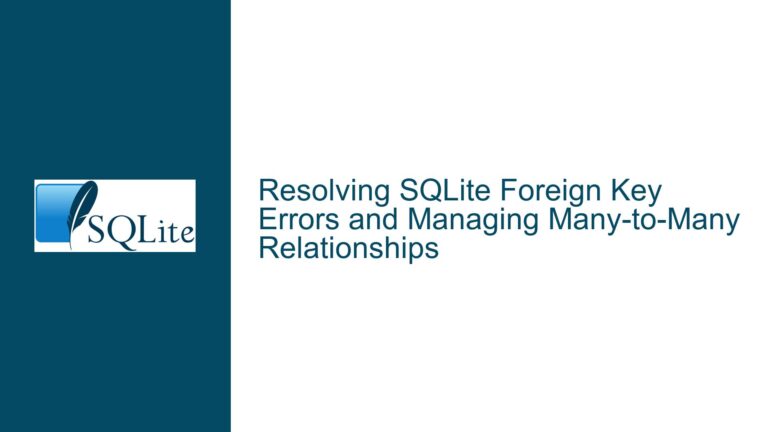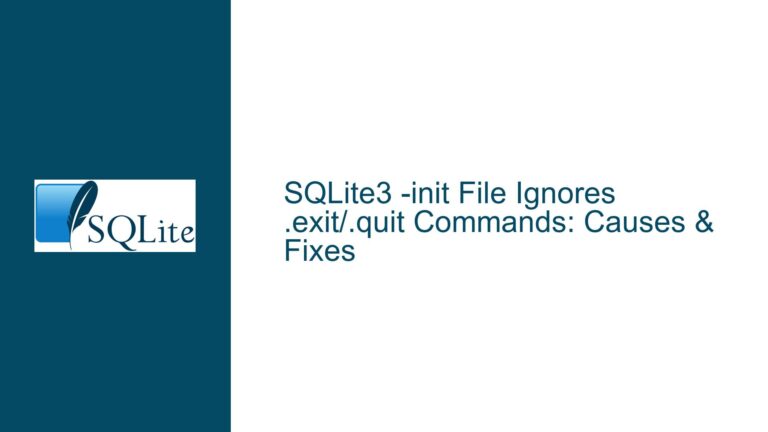SQLite File Import Behavior Change: Views and INSTEAD OF INSERT Triggers
Issue Overview: File Import into Views with INSTEAD OF INSERT Triggers Fails in SQLite 3.45.2 The core issue revolves around a behavioral change in SQLite’s file import functionality when attempting to import data into a view that utilizes an INSTEAD OF INSERT trigger. This change was introduced between SQLite versions 3.45.1 and 3.45.2. Previously, it…









